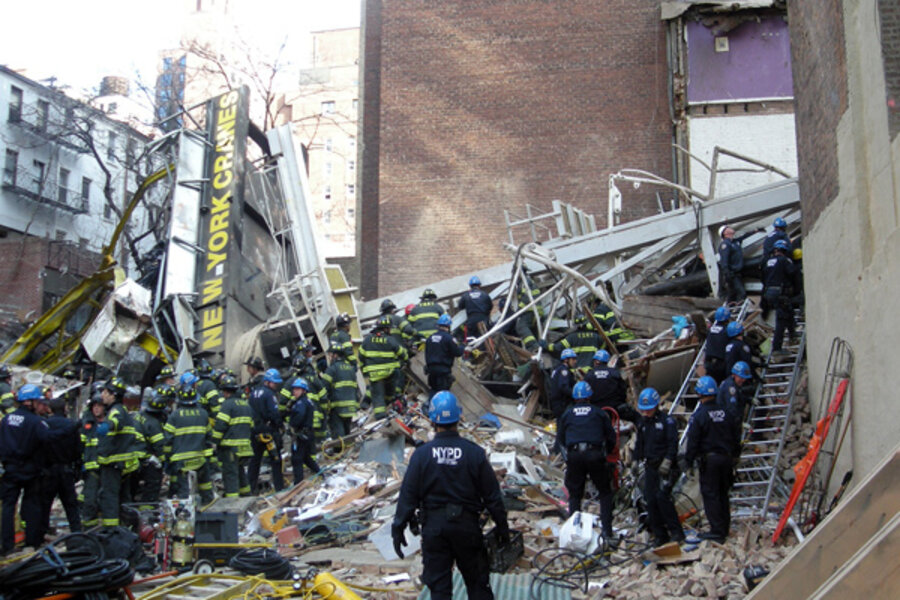Crane collapse trial for NYC rigger set to open
| NEW YORK
The crane was a 200-foot-tall, 150-ton metal tower. Its undoing amounted to four polyester straps, prosecutors say.
More than two years after the massive crane collapsed and killed seven people, a rigger was set to go on trial Tuesday on criminal charges of causing one of the nation's deadliest crane accidents by using the straps unsafely.
William Rapetti has pleaded not guilty to manslaughter and other charges. A defense lawyer says the 49-year-old rigger was scrupulous about safety, and he's questioning investigators' determination that the straps failed and caused the disaster.
The March 2008 collapse — and a second New York crane collapse that killed two people two months later — raised concerns about crane safety in the city and elsewhere. New York has since launched a slate of new crane regulations.
Rapetti was working on a crane that was building a condominium tower a few blocks from the United Nations headquarters, in midtown Manhattan. The rig was being extended upward to build higher floors when it abruptly came loose from the building and toppled over, crushing a brownstone and spewing debris as far as a block away.
Six construction workers and a suburban Miami woman visiting the city for the weekend were killed. Two dozen other people were hurt.
Prosecutors, city building officials and the Occupational Safety and Health Administration said the crane fell because the straps snapped while holding up a 6-ton piece of steel. It was part of an assembly used to tether the crane to the building under construction.
Rapetti used four straps — one badly worn — when the crane's manufacturer called for eight, and he didn't take steps to stop them from fraying as they were pulled against the crane's metal edges, prosecutors said.
Rapetti's lawyer, Arthur Aidala, has said the rigger adhered to industry know-how that differed from the manufacturer's directions and had every reason to be careful — Rapetti was standing on a beam that was being connected to the crane when it collapsed. Rapetti dived to safety but was seriously hurt, Aidala said.
Rapetti decided to have the case heard by a judge, rather than a jury. The trial is expected to take weeks.
Since the crane collapse, New York has hired more inspectors and expanded training requirements, among other safety initiatives.
RELATED:





